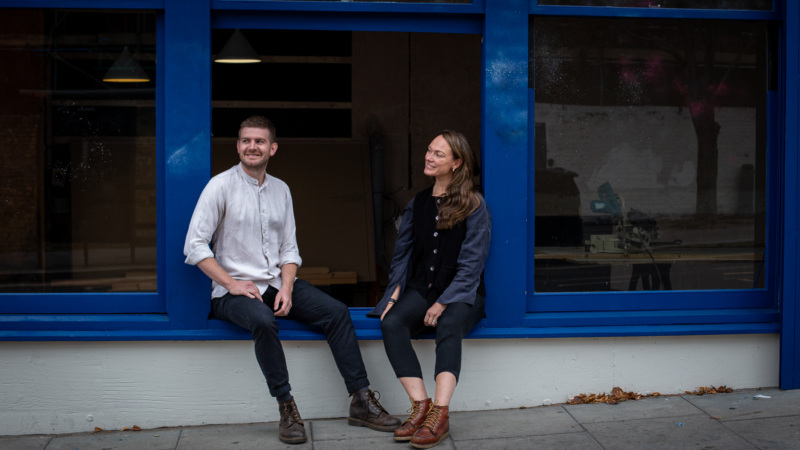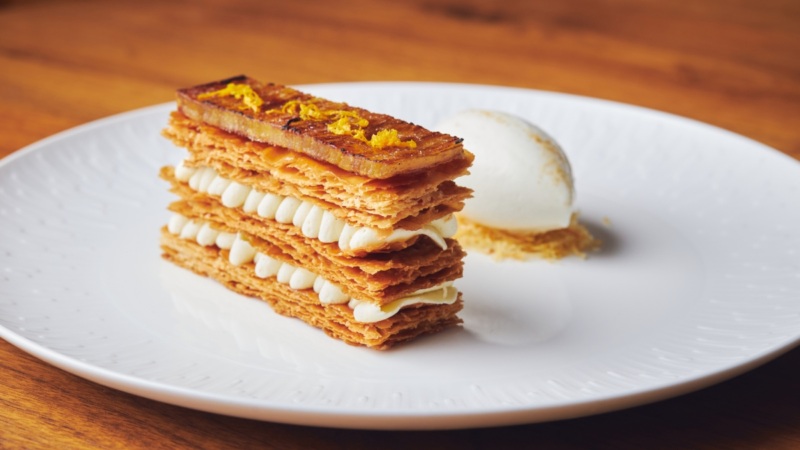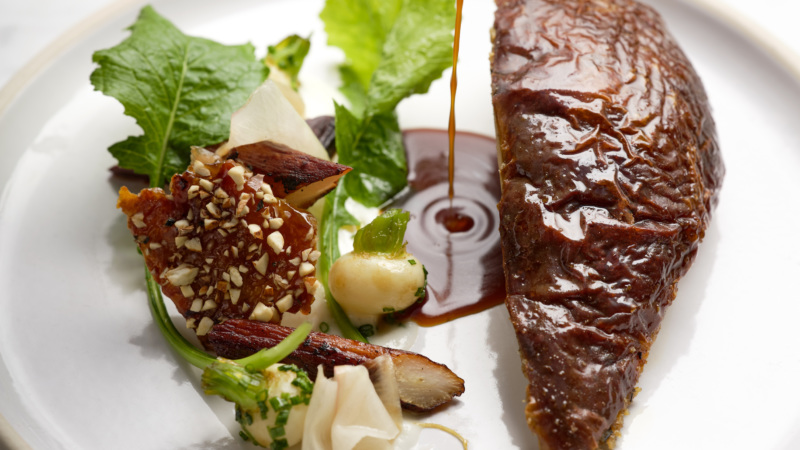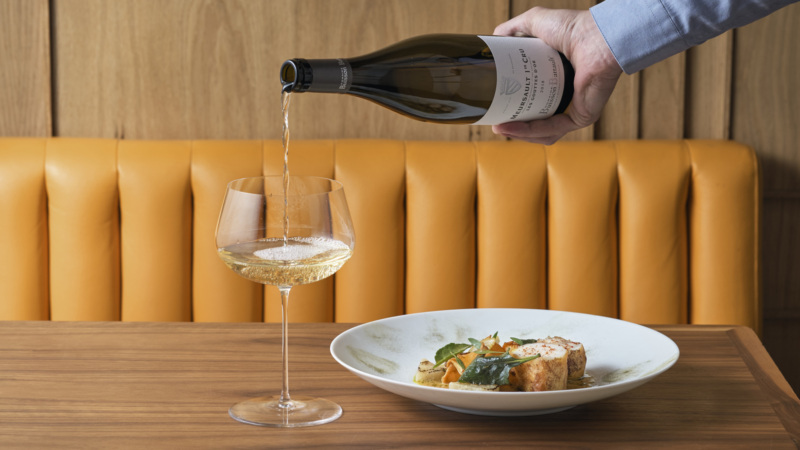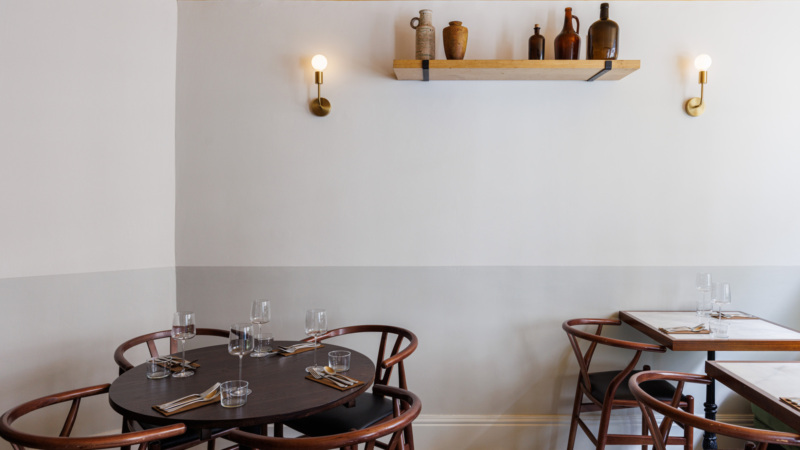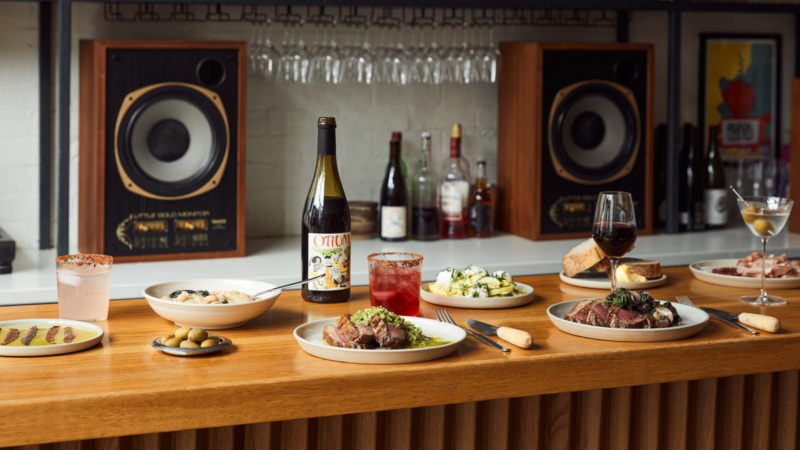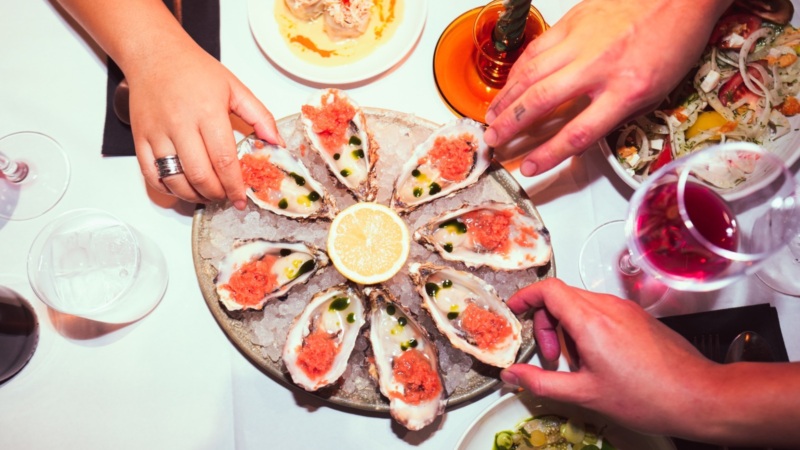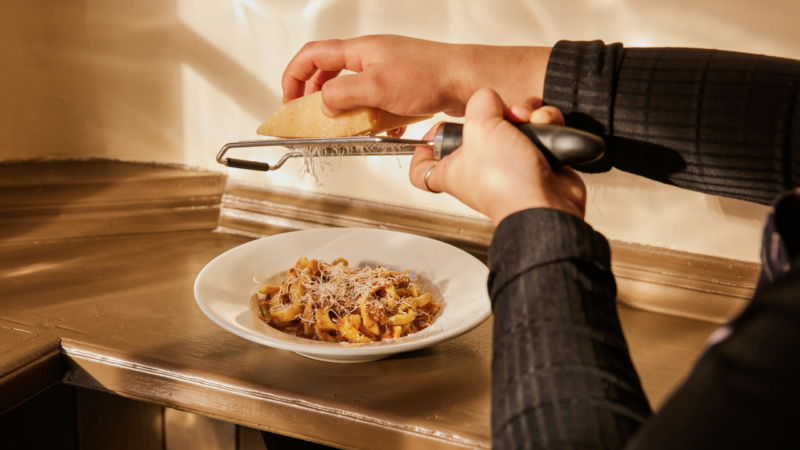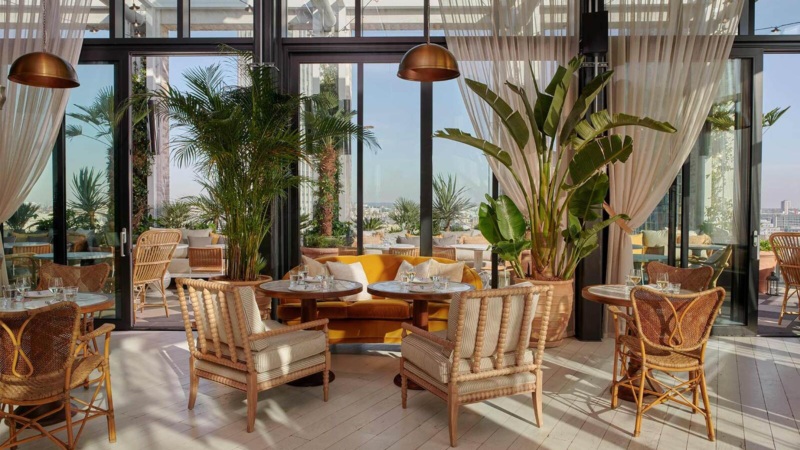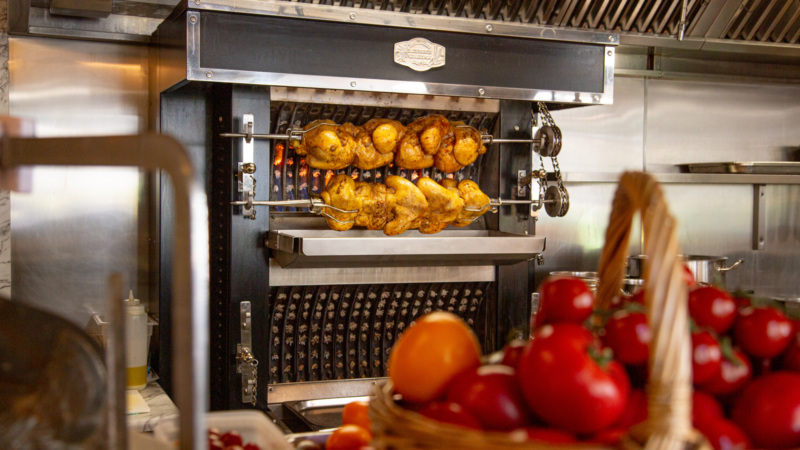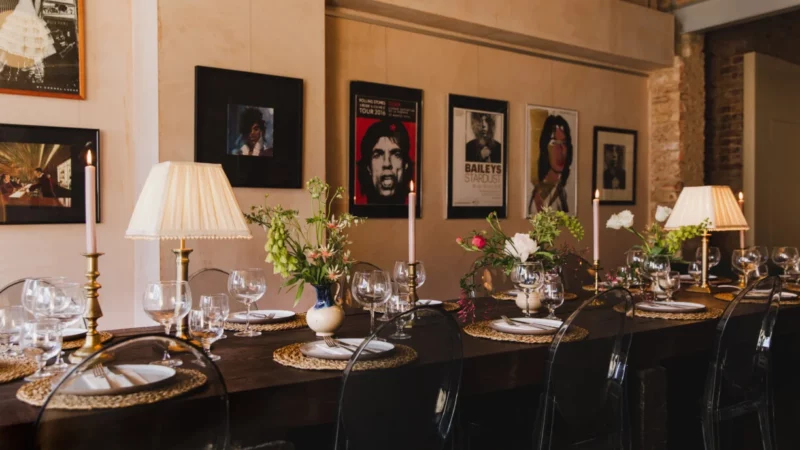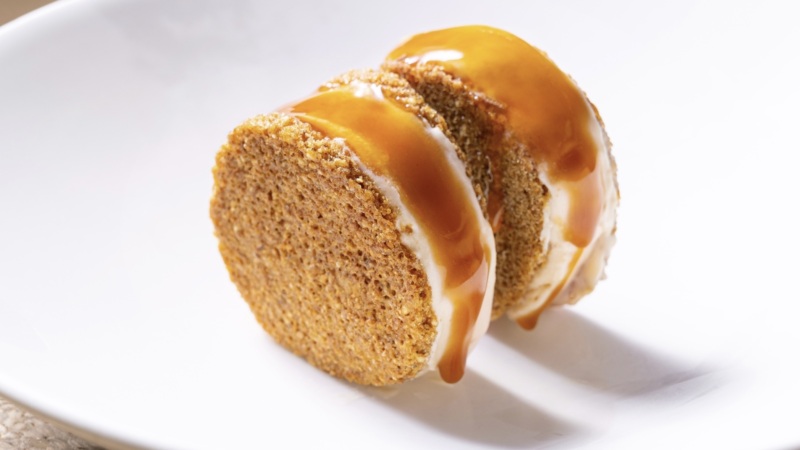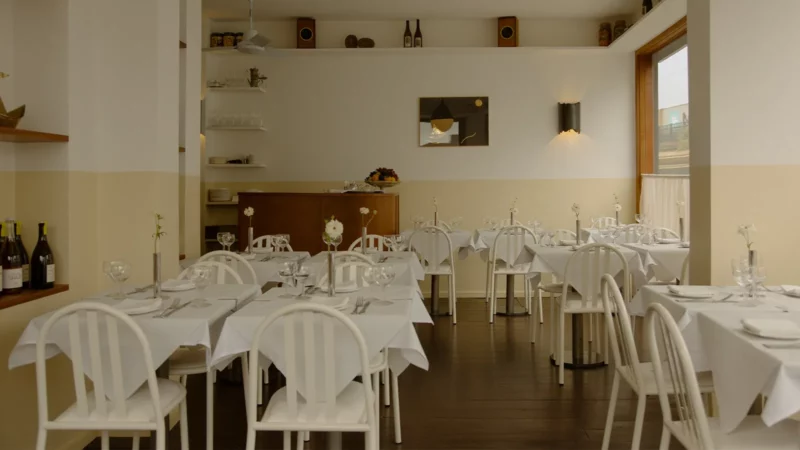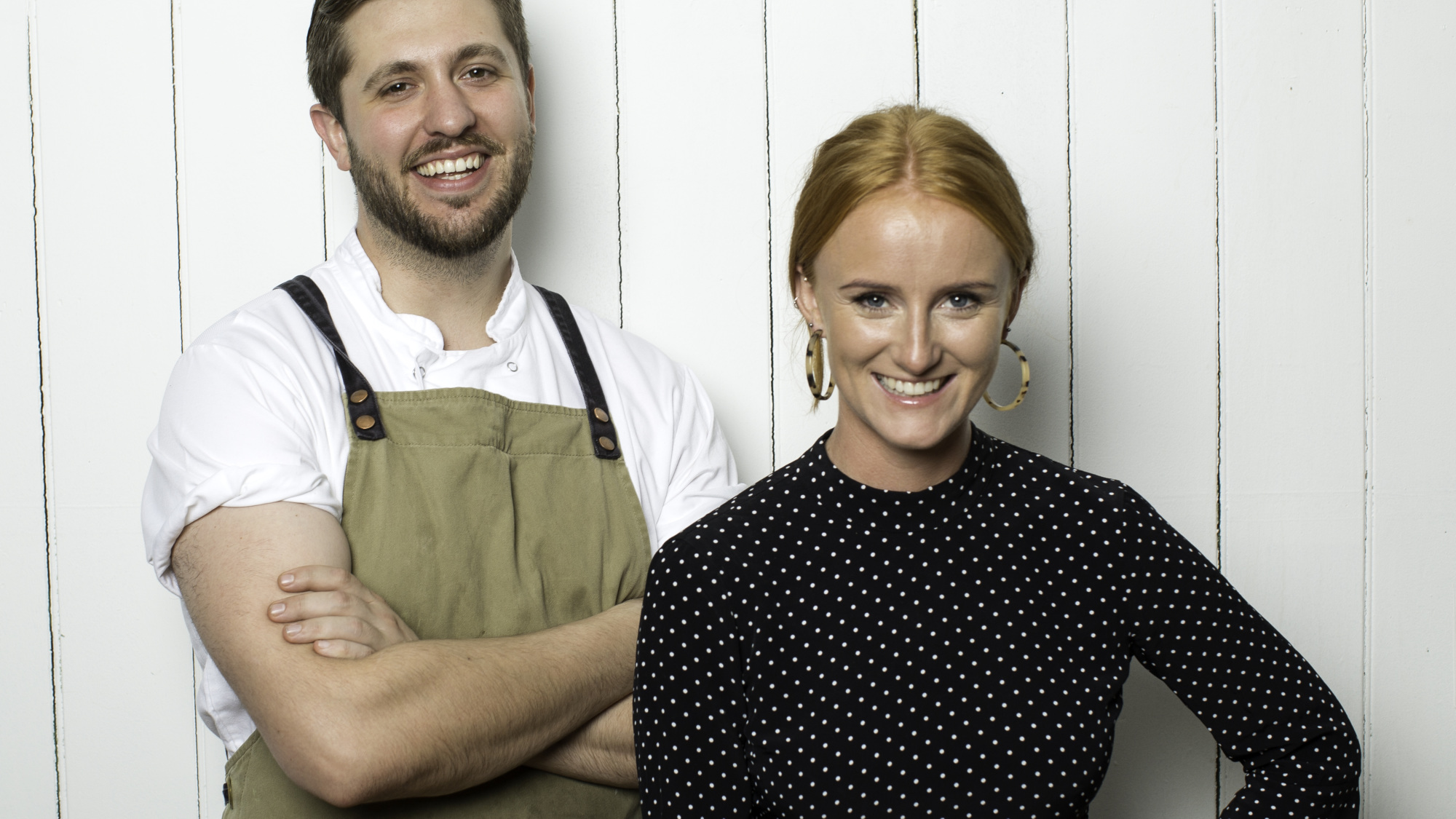
Working Towards Zero Waste: A Conversation With Native’s Imogen Davis And Ivan Tisdall-Downes
Since opening in 2016, Native has established itself as one of London’s go-to destinations for game and wild food, garnering accolades from the likes of the Observer Food Monthly and GQ in the process. Having recently moved from their original space in Covent Garden to a larger site near Borough Market, Resy sat down with co-owner and Director Imogen Davis and Head Chef Ivan Tisdall-Downes for a deep dive on sustainability, veganism and what it’s like to open a restaurant during the World Cup.
Resy: Let’s take it back to the beginning. For anyone who’s new to the restaurant, what is Native and where did you get the idea for it?
Imogen: We started off when we were at university in Brighton, selling jams and chutneys. We quickly started doing street food and pop-up restaurants. Ivan was working with a wine merchant for a while, and I was running my family business as well. So it was kind of something that we did that we really loved being involved in.
Ivan: We had very different upbringings. Imogen grew up in the countryside, and I grew up in London—I didn’t know anything about wild food, game or forest food at all. So I went to university and that opened my eyes.
Resy: So how did that relationship start at university?
Imogen: It started off with discovering ingredients, then being outside and going foraging. The fact that we were literally like chalk and cheese meant that we were able to introduce each other to different aspects of it. For example, Ivan has a business degree, so he knew about the business side of things. After, we built a unit down in Sussex—we built everything from scratch using waste materials and leftover things from sets that were being thrown away.
Ivan: We built a restaurant that we wanted to eat in. We taste all the food before it goes out, and Imogen checks it before it goes on the menu. The food is something that we would want to eat ourselves.
Resy: Looking back to when you first opened, you mentioned that when you were growing up that you didn’t see hunting or foraging as something that didn’t seem very cool at the time. But now those things are relevant for a host of different reasons. When you first communicated these ideas, what was the reaction back then?
Imogen: You always have the ones that were like, “Oh God, deer! No, how can you eat Bambi?” or, “I see pigeons all the time—how could you possibly eat that?”. But what we did was to make it really accessible. We had our wood pigeon kebab—which is still on the menu now—which is great, because everyone’s had a kebab.
Ivan: I also had Southern-fried rabbit on the menu, too. It’s not like we served it with the head on, we just did it in a more playful way. We were trying to make it approachable and accessible for everyone.
Imogen: Yeah. And then it’s not so scary. I remember the first time I had duck and pancakes—it was at my friend’s house when I was, I don’t know how old I was, I must have been about 15? And it was the first time I’d had duck and pancakes from a Chinese takeaway. I was copying how she did it, and she’d laid three pancakes that were overlapping. So I laid [the filling] out across all three pancakes because I didn’t know what to do. [laughs] And it was really funny, because I’d never had it before! So I loved it, but because it’s something that you don’t know, you can be really scared of eating it.
Ivan: It’s a point I’ve never thought of before, but growing up, I was probably more comfortable eating food from other cultures than eating game—ingredients that are native to this country. I’d eaten crispy duck, but I’d never had ‘indigenous’ foods. If you grew up in London, you didn’t know that it was there at all.
Resy: Imogen, how did the experiences of hunting and foraging during your upbringing affect how you see food and how it’s prepared?
Imogen: So I’m number two out of six children. We grew up without television, so we were very outdoorsy. That’s not to say that I didn’t really just want to have a telly—all I’d want to do when I went round to a friend’s house was watch telly [laughs]. But it’s something that has been so ingrained into me now that it’s completely natural. When I went to university, even if I didn’t have that much money at all, I’d just buy sensibly.
Ivan: You didn’t have meat every single day of the week.
Imogen: Yeah, I only had it once a week.
Ivan: One good piece of meat, as opposed to mass-produced meat every day like turkey drumsticks and all that sort of stuff.
Imogen: It’s what I dreamed of [laughs] but it’s not what I had. It was only when I went to university and started going around friends’ houses that I would see—and that sounds so mean, because it wasn’t like I was always judging—but I would see a piece of meat on a plate and it was grey, or vegetables that were just out of a tin that just didn’t have any flavour.
It was more the flavour that I noticed, first of all. And fruit was a really big thing, because an apple didn’t taste like what I thought an apple tasted like. And the biggest credit to my mum for that. It’s not like she had any money. We’re from a really not very well-off area back in the Midlands, and she worked really hard to make sure that we made conscious decisions about food. She’d done such a good job that I didn’t realise that there was another side to it.
So it’s more that when I went to university that I was exposed to that. I’d never used a microwave before—I blew up two of them in student halls and reheated chicken for 25 minutes and it turned to ash [laughs].
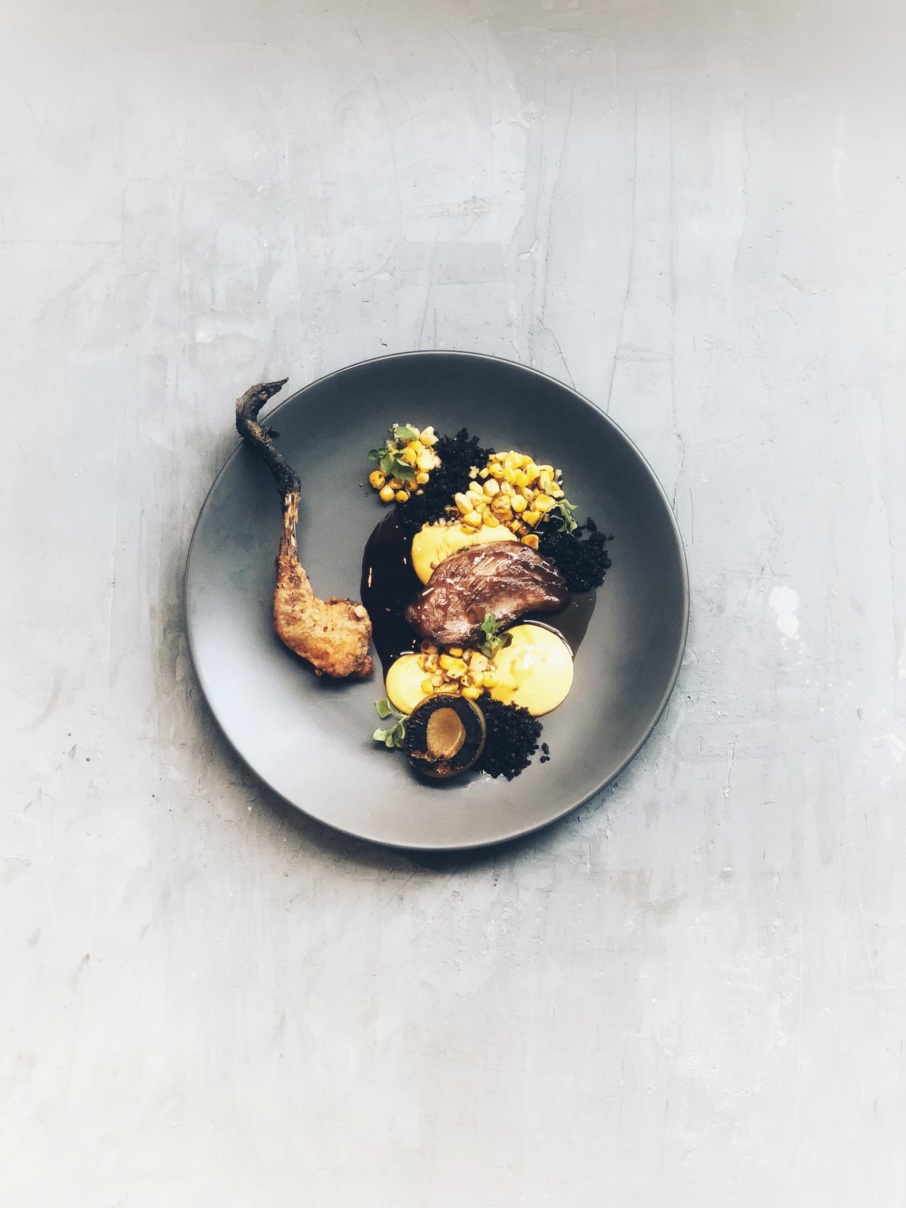
Resy: I actually look forward to the vegetarian dishes the most, because I want to see what you can do with a cauliflower or a carrot.
Imogen: Absolutely. Absolutely.
Ivan: We try to think of ways to use produce and treat vegetables like meat–we might cure the vegetables slightly first, or we might try and confit them. It’s much more exciting to do, but also a lot harder.
Resy: What prompted the move to Borough from Neal’s Yard?
Imogen: It was a planning issue that we’d had from before we’d even opened there, and we’d been backwards and forwards with our landlords.
Ivan: There’s a rule where you can turn most sites into a temporary restaurant for two years. And after the two years, you can apply to get a permanent restaurant license. So we did the two years and our landlords were going to apply, but then Camden council said that there were too many restaurants in the area, which is insane. We were tiny and we made no footprint at all, but we were made an example of.
Imogen: The thing is, it wasn’t really worth it for our landlords, who were willing. We were given a month’s notice, which was absolutely ridiculous. We didn’t have the money and we wanted to keep our staff, so we had to turn to Kickstarter. It was just stuff that you don’t think that you’ll have to do, but you do it—and here we are.
Resy: How quickly did you hit your target on Kickstarter?
Imogen: Two weeks, £50,000.
Ivan: Smashed it.
Imogen: It was all we had!
Ivan: We closed that site down in one week. We took the same banquettes from the Neal’s Yard site, and built the tables ourselves. We built the first table out of the floorboards from the old place. We came in here and had to get everything done in a week.
Resy: What are the pros and cons of the new site?
Imogen: The accessibility means that we can do a la carte and tasting menus. We don’t have as many limitations with storage and bringing in things like whole deer and butcher them down and use the whole thing—all of that is just amazing.
Ivan:We work with Northfield Farm in Borough Market, and it’s amazing. They teach butchery there, and sausage making as well. It’s a really nice little community. At first we felt a bit lonely, but Flat Iron Square have been really good to us, people in Borough Market, Gentlemen Baristas…
Imogen: Oh, they’re so nice. We’re so close to the City as well, so trying to tap into that as well.
Ivan: The first month of the World Cup, we basically had no customers—it was the worst thing ever.
Imogen: Oh yeah—it was awful. At Neal’s Yard, we were such a tiny little thing that we could generally fill it. All these trend pieces that you see, like ‘Restaurants for the World Cup’—I didn’t know that was a thing when we were at Neal’s Yard. But here, it totally makes sense. Things like the World Cup really do have a decline on people who dine in restaurants, because of the area. We’re learning a huge amount—but, always learning. I love this building. And I love that we’re able to be Native and do a really nice job here. We’re lucky.
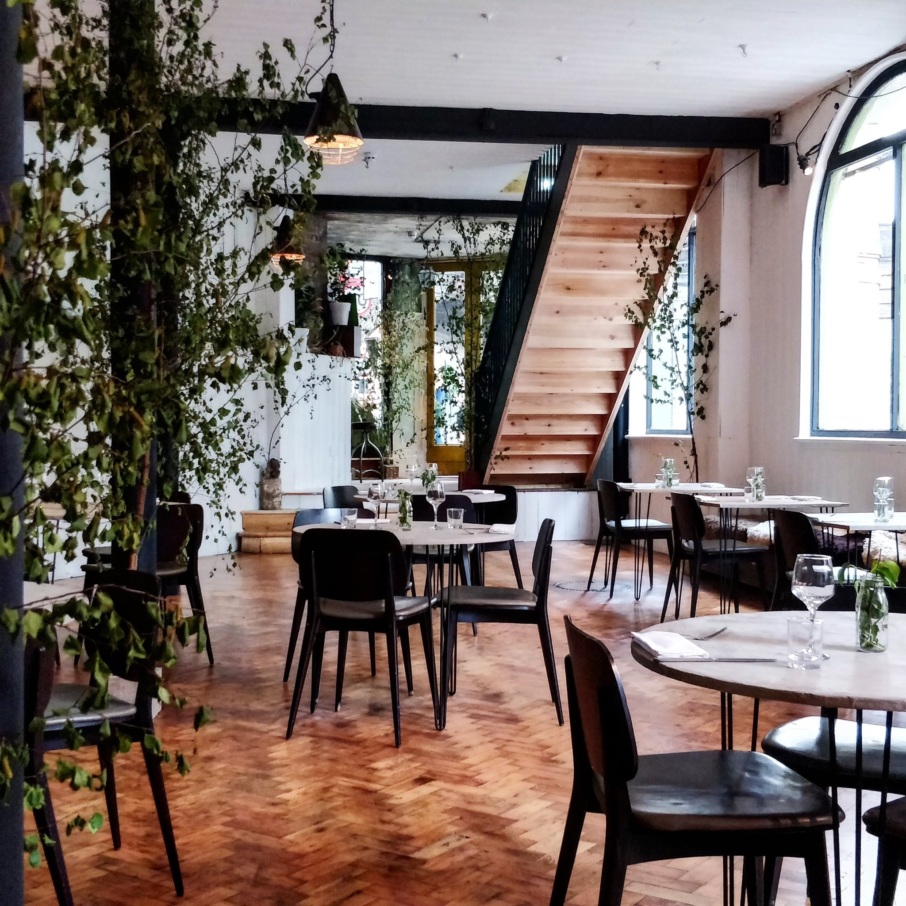
Resy: Ivan, growing up in London and having the trappings of growing up in the big city, how was it for you when you first started working with wild ingredients?
Ivan: Yeah, I guess I’m completely the opposite. It’s a tough one. When you don’t live in the country, the cost of eating organic produce or produce straight from the farm is a lot harder.
Imogen: It’s seen as a really pretentious thing.
Ivan: It’s seen as pretentious and we’ve removed the hardship by making supermarkets a one-stop shop. And there isn’t a Borough Market around everyone’s corner. For me growing up, my mum and dad were working all the time, so food was about convenience. So we didn’t really have the opportunity to go to farmer’s markets.
I’m a self-taught chef, and basically TV taught me how to cook; I spent the whole time watching Great British Menu and watching Masterchef Australia—the Australian one has all these masterclasses. From reading books and watching TV, I’d try and replicate dishes.
I couldn’t afford to go and buy a truffle, so I’d go out in a field and start foraging. And when I went to university in Brighton, my parents left London as well, So I’d spend the summer holidays there in the countryside and all my friends were still in London. I’d go and walk the dog and start picking berries to make jam with, and then I’d start Googling what to do with them. And that’s how my foraging started.
Resy: Did you learn in any kitchens?
Ivan: I went to River Cottage and learned how to do a bit of cooking there, and then I also went to Blue Hill Farm to see how to run a Michelin-starred operation. It was absolutely insane. There were about 30 people in the kitchen for 90 diners. They didn’t do a lunch service, so you got in at eleven all the way to two in the morning, and you’d do it five days a week.
Each person got about 25-30 dishes. The order would come in and the Head Chef—Dan Barber—he’d write each diner their own menu. You’d never get a menu when you sat down. Every diner is under the impression that they’re getting a different meal than the person sat next to them. They’d send out pigs trotters, for example—each table had a captain to look after them—and if they didn’t like it, they might send out chicken, but not if the person sat next to them was also having chicken. But they had so many chefs that were working there for free, so they could afford to do that. But the experience was amazing. It blew my mind.
Resy: Did it give you any ideas?
Ivan: One-hundred percent, yeah, it did. It’s all about the experience over the food, what you give the diner, how you present the food. What the front of house says, and how to describe the dishes.
Imogen: It’s good to see other peoples’ approach, because you just think that service is service, and that you’ll just get your food and eat your food. It’s taking it to that next level, and thinking about things all the way along and really paying attention to what people respond to.
Ivan: And that not every single diner needs to have the same cut. One diner could get a piece of meat from the leg, and another from the loin or cheek. As long as you’re serving the same element, you can really make use of nose-to-tail. When you’re getting the only two fillets on a deer, that makes it special. We know that this animal was shot from this estate, the time, place, the name of the person who shot it, all of these details. That’s still not our strength at the moment, relaying that information to diners—that’s where we could improve, definitely.
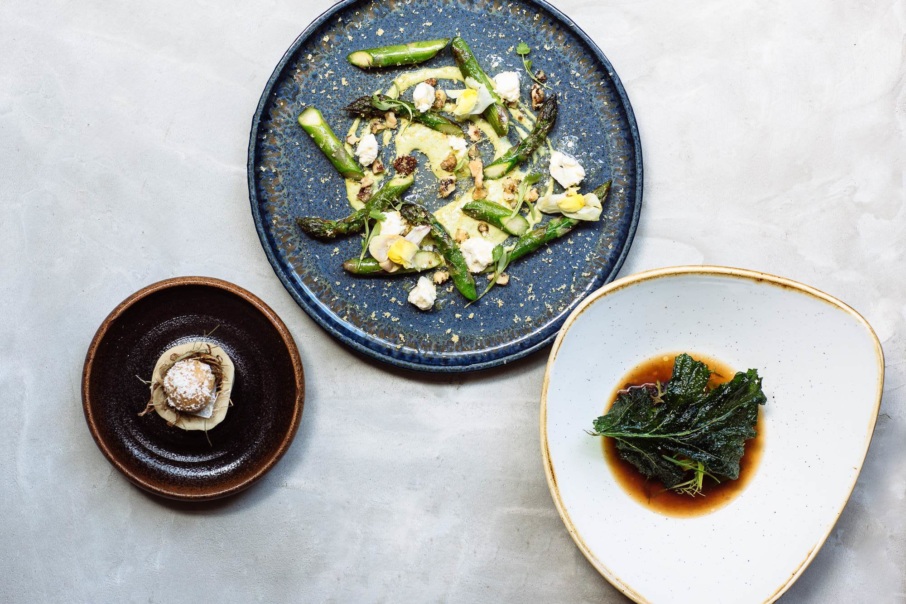
Resy: For you, why is traceability and sourcing important?
Ivan: A lot of vegans would come in and have the venison here.
Imogen: It’s the only place they’ll eat meat, which is amazing. They used to come in and sit at the chef’s table at Neal’s Yard and every time, I was just absolutely, like—she’s been a vegan her whole life—and every time she’d have the venison. We have a picture on our Instagram of the guy who supplies our deer, and that’s good because it’s traceable and makes you feel better about eating something.
Resy: Since you’ve opened, veganism has become mainstream. There’s still plenty of meat on the menu, but would you put more of an emphasis on future menus towards plant-based dishes?
Imogen: We’re a genuine reflection of what’s available, so some days, say, if there’s really bad storms and the fishermen that we work with don’t go out, we don’t really have much fish on the menu. Likewise, if we plan to have rabbit or we plan to have pigeon, and if the weather interferes or something happens, we are that genuine reflection of what happens on the day.
So the fact that vegetables generally are a lot more reliable, you can bank on them and that’s something that we’ve always focused on. For me, I think we always want to have a healthy number of options for people to choose between. And then if we feel that one week that we really want two beetroot dishes on the menu, then they’ll just go on.
We work with Sutton Farm and they turned up one day in the middle of Friday service, with boxes at the front up to the top and it was squash and kale in quantities that we would never be able to get through realistically. So we had to think cleverly about it, so we were just making different things.
Ivan: The same thing happened with Dan Barber, where he went mad one day and bought loads of asparagus, and went, “shit, what have I done?”. And so every single dish had asparagus in it. We had the same thing with kale!
Imogen: So that was a vegan day. You can see what everyone is doing, and it’s really fun to see what trends are out there and to play around with things. We have a venison bao on our wasting snacks, and we’re 100% not being like, “now we’re doing bao!”, but it’s a fun way to showcase venison and tasty little bao buns. Everyone recognises it, and that’s great.
Ivan: It’s fun for us to make.
Imogen: It’s fun for us to make, fun to eat, and really delicious, and I think taking those influences, it’s important to have that creativity as well and it shows that you’re reflecting it as well. But if you start chasing trends, it’ll be too late by the time you start doing it.
Ivan: The cost of produce is the biggest one. It might go more vegetarian as the cost of meats gets more and more expensive.
Imogen: And we don’t know what’s going to happen at the moment, with Brexit and all of that nonsense. So I imagine British produce—what we already use—the price is going to go up dramatically. So who knows what’s going to happen.
Ivan: That’s why it’s important to make meat go as far as possible, perhaps dry-curing and shaving it, using it as a flavouring.
Imogen: I was speaking to my Granny about it and she was saying, “we survived during the war, and we had ration bricks”, and it feels like we’re coming to a similar place now. On the radio, someone mentioned that rationing could come back into play, and that feels absolutely bonkers.
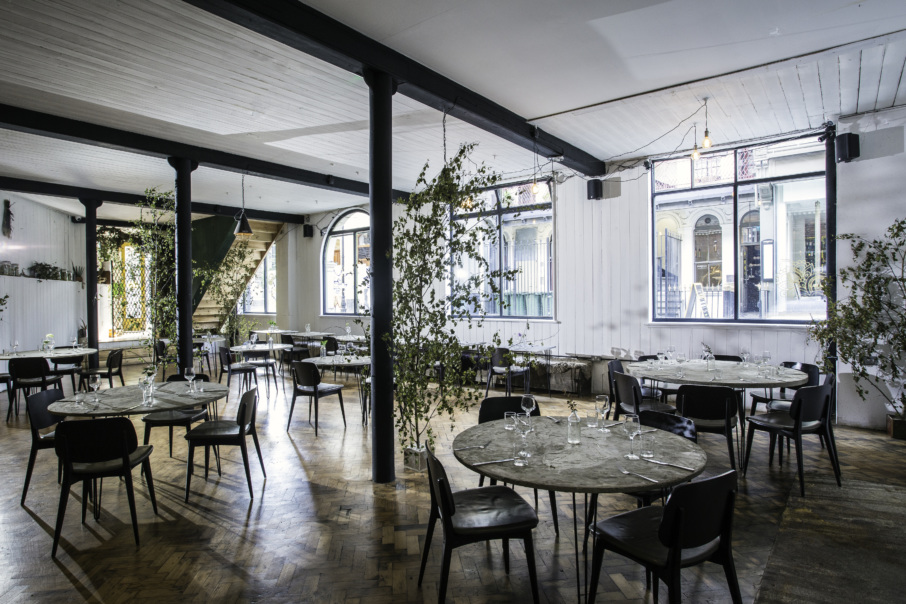
Resy: Native’s zero-waste snacks are some of the most popular items on the menu. Can you tell me more about them? Where did the idea come about?
Ivan: It’s something that we were always doing from the start of our business—trying to be as frugal as we could. I think it was after wastED came about with Dan Barber, and it became a trend in the conversation and people started talking about how “everything on this menu is made from ‘waste’ produce”, and we thought, hang on, this is what we’ve already been doing! So we thought we’d just start shouting about it.
It’s something we’ve always believed in, nose-to-tail, stem-to-root, using every single part of the plant or animal to make money, but also just not believing in trying not to create any waste at all. I don’t know who told us that we shouldn’t eat the stalks of broccoli or cauliflower. But we call them our waste snacks, because literally every single one has a ‘waste’ component or generates zero waste, so the whole thing is pretty sustainable. We go through one bin collection a week, versus a comparable restaurant that might have collections twice a day. Our collector was really concerned that no-one was eating in our restaurant! [laughs]
Imogen: He asked if we were doing alright, and we had to explain that we’re trying to be zero waste, and he was like, “Yeah, right” [laughs]. He clearly thought we weren’t doing well! If we had more money available we would be able to have a biodigester onsite and all these things, but we’re kind of like the poor man’s version of being sustainable and zero-waste because we’re being as efficient as we can. If we could have a whole machine that could break down glass and re-melt it into really lovely plates, then of course we would.
Ivan: It’s getting to the point where we’re really struggling to make the chef’s wasting snacks because all of the other dishes are so sustainable. You pay for those waste collections as well, so from a business point of view, it also makes sense.
Resy: Since Native opened, it’s been a restaurant that’s led the way for small, independent restaurants in reducing waste and their carbon footprint. More broadly, what can restaurants do as a collective whole to reduce waste?
Ivan: Cardboard is the biggest one I think.
Imogen: Plastic as well.
Ivan: We’ll chase our delivery drivers out with the boxes because we don’t want them.
Imogen: Like polystyrene with the fish, there’s no reason that they should be wasted. But we’re so tiny and we don’t have the buying power to say, “we’re not going to work with you any more if you don’t deliver”. Whereas if you’ve got the big names that are just being a little bit more switched on, if they say: “if you deliver anything else in plastic, we’re not going to work with you”, they would change it like that. But they need to have the force, and it also needs to be able to trickle back to the supplier.
To be a supplier or a restaurant, it’s hard work. So we’ve got to make it easier for everyone to make those decisions, and to be more conscious in their choices. And not make it a ridiculously expensive thing—if we start getting the [restaurants] at the top saying “we’re not going to use this any more”, it would be so much easier for everyone, and smaller independents starting out trying to do a good thing.
Ivan: A few supplier are delivering plastic crates, and when they deliver the next day you have to return the crates. And, if you miss it, they charge £20 per crate.
Imogen: And that’s a really good thing!
Ivan: It makes people stop and pay attention. At that cost, they can’t afford to not re-use those items.
Imogen: It’s working out how to do it–and it’s not the easiest thing, and any changes that happen are a headache for somebody along the line. Getting everyone on board is a really difficult thing. We’re just doing what we know.
Resy: Is there anyone you’ve noted that does a good job of being really sustainable?
Ivan: It’s hard to notice from the perspective of the diner. I think The Conduit is supposed to be quite sustainable–I’ve heard quite a bit about it.
Imogen: Yeah. And the Michelin side of things is that everyone is changing the thinking that every dish has to look exactly the same. Really high-end restaurants have so much food waste —honestly, if you’d have seen the amount of food waste that goes in the bin, just because it didn’t fit that certain particular aesthetic. And regardless of plastic, you can’t be in London without seeing homeless people that are hungry. When you put it all together, I just think that being a little bit more conscious about food is not a bad thing.
Ivan: Bread Ahead give all their bread away at the end of each day. They turn up and they’ve got their purple visors and their big bags (note: referring to Borough Market’s Zhero Waste initiative).
Imogen: That’s so good! That’s something at Borough Market, actually. They organise something with a food bank. So rather than individual traders having to sort something out, Borough Market arrange it—they’ll take everything and send it to the food bank. It’s a really good thing because Borough Market are such an iconic landmark in London. They don’t necessarily shout about it, but they do really good things. They’re the real deal.
Resy: During the whole time and during your journey here, what have you been most proud of?
Ivan: Still being open, I think that’s what I’m most proud about. [laughs]
Imogen: Do you know what, it’s really true!
Ivan: The amount of places that close after their first year, I’m just glad we’re still going.
Imogen: We had someone in the other day, and it really got me. You deal with so much in a day, and it can be difficult. They had been in quite a few times at Neal’s Yard, they’d been a few times here, and they’d supported us on Kickstarter, and they were in on Friday and we were chatting. And they said, “This is our happy place. We only bring people that we really like, and everyone knows it as our happy place. We know exactly what we’re going to get.” That’s actually what it’s all about.
Ivan: For us, it’s so intimate. Every day, we’re literally focused on this tiny space and when people come in say that they’re big fans, it’s astonishing. [laughs] Every day, we’ll need to fix the toilet or mend a wall, so it means the world to us.
Imogen: When people say that you’re doing a good job, it’s nice to be reminded that you’re doing alright.

